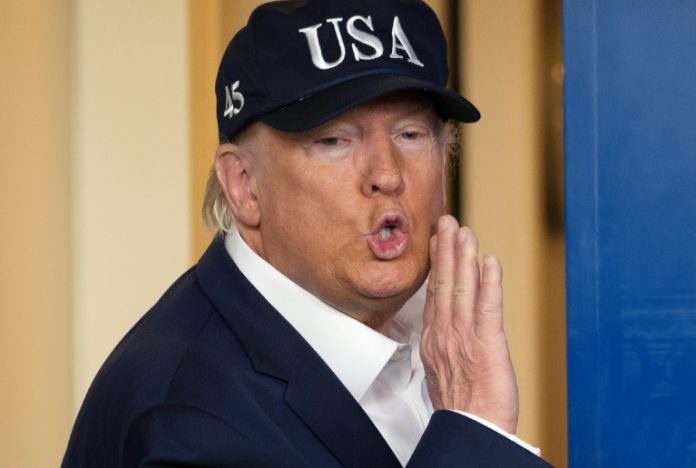Chaos gripped major US airports Sunday as Americans returning from coronavirus-hit European countries overwhelmed authorities attempting to process the surge.
Frustrated passengers complained of hours-long lines, crowded and unsanitary conditions and general disarray in the system for screening people for symptoms of the virus.
“Very close quarters,” Ann Lewis Schmidt told CNN, describing conditions at Chicago’s O’Hare International Airport (ORD). “So if we didn’t have the virus before, we have a great chance of getting it now!” Schmidt said.
US airports have been hit with a flood of Americans, many of them students, since restrictions on travel from Europe ordered by US President Donald Trump took effect at midnight Friday.
The United States on Saturday extended the ban on travel from Europe, South Korea and China to Britain and Ireland. Only US citizens and legal residents are being allowed in from those countries, and they are then supposed to self-quarantine for 14 days.
– ‘Do something NOW’ –
Illinois Governor JB Pritzker said the crowds and lines at O’Hare were “unacceptable & need to be addressed immediately,” in a tweet directed at Trump and Vice President Mike Pence, who is coordinating the administration’s response to the pandemic.
“@realDonaldTrump @VP since this is the only communication medium you pay attention to — you need to do something NOW,” he said.
Chicago Mayor Lori Lightfoot was equally scathing: “The reactionary, poorly planned travel ban has left thousands of travelers at ORD forced into even greater health risk,” she tweeted.
“@realdonaldtrump and @CBP: no one has time for your incompetence. Fully staff our airport right now, and stop putting Americans in danger.”
CBP stands for Customs and Border Patrol.
Similar conditions were reported at New York’s JFK Airport and in Dallas.
Chad Wolf, acting Homeland Security secretary, acknowledged the long lines in a tweet and said his department was trying to add screening capacity.
“It currently takes ~60 seconds for medical professionals to screen each passenger. We will be increasing capacity but the health and safety of the American public is first & foremost.”
The airport bottlenecks were the latest evidence of turbulence in the administration’s response to a pandemic that started in China in December and has since spread worldwide.
– Trump tests negative –
President Donald Trump, who had played down the risks early on, was himself tested for the virus Friday night, days after potentially being exposed to it during a visit by Brazil’s President Jair Bolsonaro.
“This evening I received confirmation that the test is negative,” the president’s physician Sean Conley said in a Saturday memo.
Contrary to medical advice, the president was seen Friday shaking hands all round as he gathered his coronavirus response team at the White House – a practice he said Saturday owed to long-time habit as a politician but which he said would have to change.
The White House announced earlier in the day that “out of an abundance of caution, temperature checks are now being performed on any individuals who are in close contact with the president and vice president.”
Before Saturday’s briefing, a member of the White House medical team took the temperature of all journalists wishing to attend.
One of them was excluded after a high reading.
– Travel ban –
In announcing the extended travel ban on Saturday, Pence said the returning Americans would be “funneled through specific airports and processed.”
Trump meanwhile advised against non-essential travel, and said officials were considering imposing travel restrictions within the United States.
“If you don’t have to travel, I wouldn’t do it,” Trump told the news conference. “We want this thing to end. We don’t want a lot of people getting infected.”
Trump spoke to British Prime Minister Boris Johnson on Saturday about the new restrictions, according to the White House press office.
European officials have reacted angrily to Trump’s sweeping travel ban, which also caused widespread consternation among travelers.
The original 30-day US ban on travel from the 26 countries in Europe’s Schengen border-free zone took effect on Saturday, but notably excluded Britain and Ireland.
A senior administration official said he believed that the new limits on travel from the UK and Ireland would be for the same period of time as the restrictions already imposed on continental Europe.
The administration had hoped to stop anyone from the continent using the UK and Ireland as transit points en route to the United States, the official told reporters in a background briefing, “but that is proving operationally very difficult for us.”







